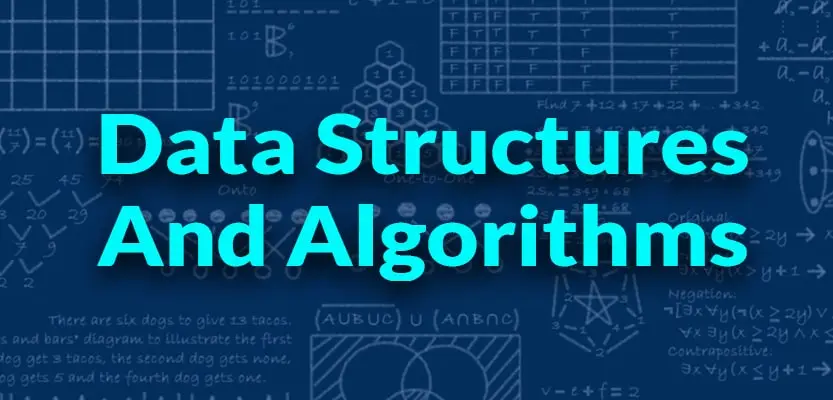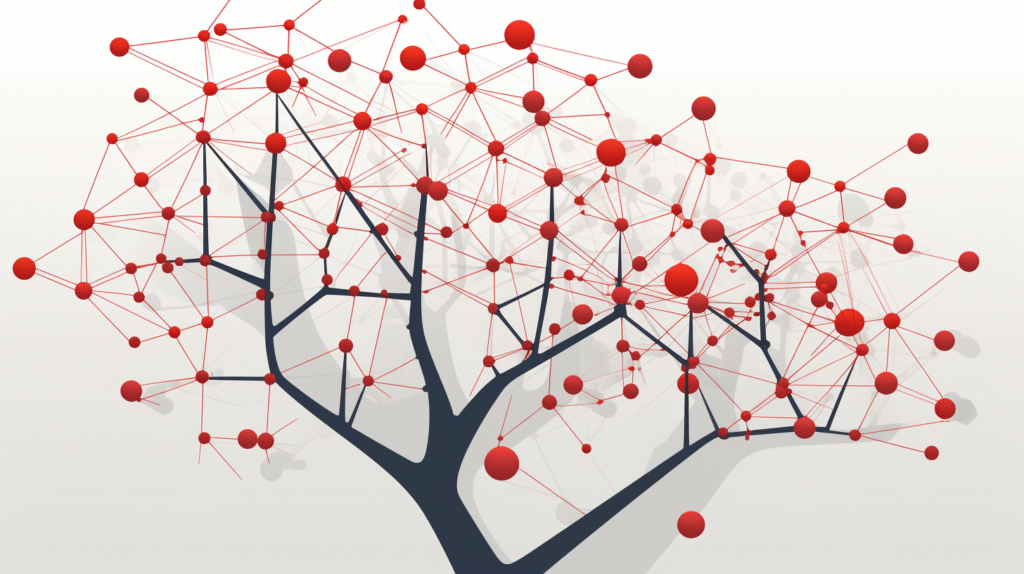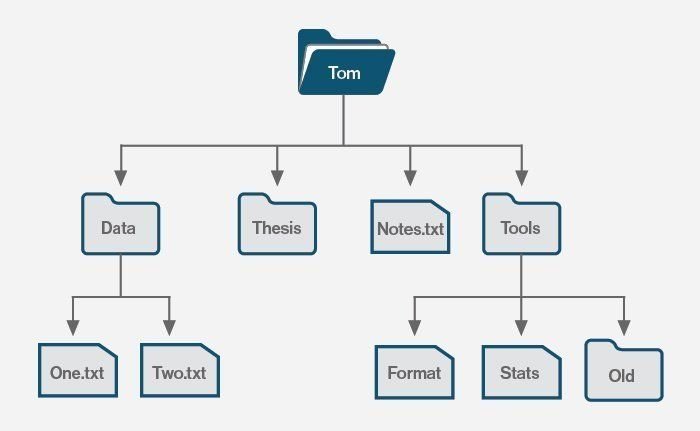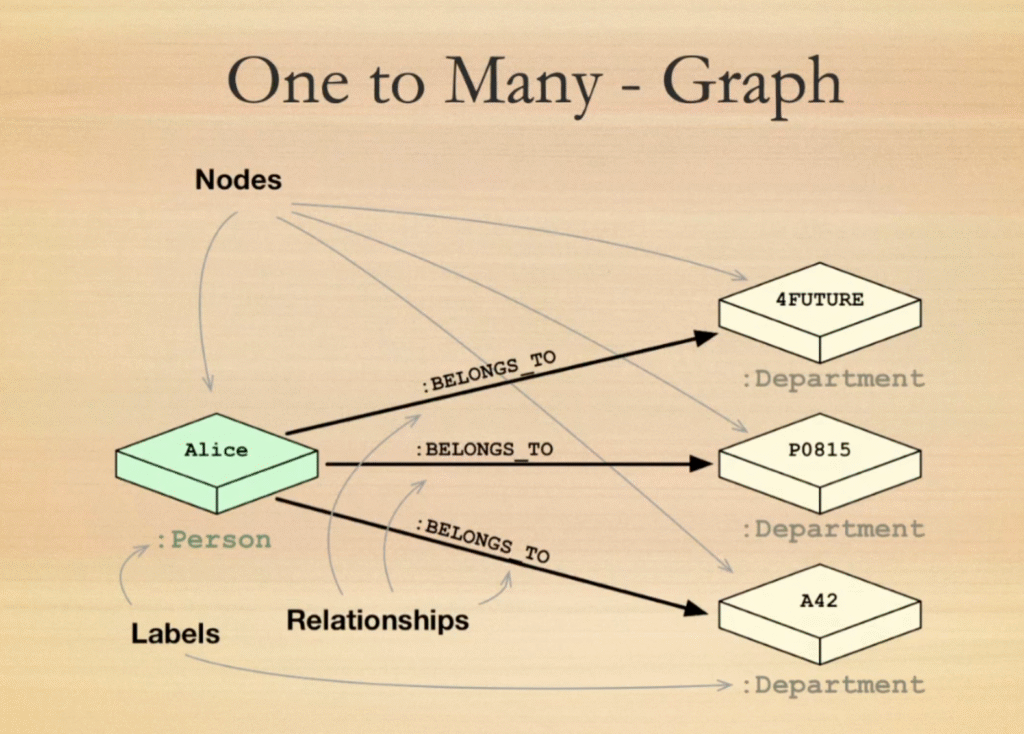
Powered by Pinaki IT Hub – Building the Next Generation of Tech Leaders
Technology has always been built on strong fundamentals. In computer science, Data Structures & Algorithms (DSA) have been the backbone for decades, ensuring efficiency, speed, and reliability in software systems. At the same time, Machine Learning (ML) algorithms are redefining how industries operate in 2025, enabling machines to learn, predict, and automate decisions. But the real question is – do we still need DSA when ML is taking over? Or are they both equally essential for the future of IT?
Understanding the Basics

Traditional DSA (Data Structures & Algorithms) – The Foundation of Computer Science
When we talk about the fundamentals of computer science, Data Structures & Algorithms (DSA) sit at the very core. They are often called the “language of efficiency” because they determine how data is stored, accessed, and processed in the most optimal way possible.
Data Structures: The Building Blocks of Efficient Computing
Data structures are not just containers; they are strategic blueprints that decide how information is stored, retrieved, and manipulated in a computer’s memory. Choosing the right data structure can be the difference between a program that runs in milliseconds and one that takes hours. Let’s explore the most important ones in depth:
Arrays – The Foundation of Data Storage
When it comes to organizing data in computer memory, arrays are often the very first data structure taught to programmers — and for good reason. Arrays provide a simple yet powerful way to store and manage a collection of elements.
At their core, arrays are collections of elements of the same type (such as integers, characters, or floating-point numbers) that are stored in continuous memory blocks. This means that if you know the starting address of an array, you can instantly jump to any element by applying a simple arithmetic calculation:
Address=Base+(Index×SizeOfElement)Address = Base + (Index \times SizeOfElement)Address=Base+(Index×SizeOfElement)
This direct computation makes accessing elements almost instantaneous. For example, if you want the 5th element in an array (array[4] in most programming languages, since indexing starts at 0), the computer can fetch it in O(1) time without scanning through the entire collection.
How Arrays Work
Think of arrays like books on a shelf: each book (element) has a fixed position. If you know the position number, you can immediately pull out the book without scanning others. This ordered arrangement makes arrays extremely efficient for random access operations.
However, the “fixed shelf” analogy also highlights their limitation: once the shelf is full, adding new books requires either replacing existing ones or buying a new shelf (resizing), which involves copying everything over.
✅ Advantages of Arrays
Best for Fixed-Size Collections
○ Perfect for storing static data like marks of 100 students, monthly sales data, or weekly temperatures.
Constant-Time Access (O(1))
○ Direct access to any element without looping. This makes arrays ideal when fast lookups are needed.
Simplicity and Predictability
○ Easy to implement, understand, and use across nearly all programming languages.
Cache Friendliness
○ Since elements are stored in continuous memory, modern CPUs can pre-fetch data into cache, boosting performance.
⚠️Limitations of Arrays
Resizing Overhead
○ If the array is full and more data needs to be added, the system must allocate a new, larger array and copy all existing elements over. This resizing is computationally expensive.
Costly Insertions & Deletions
○ Inserting or removing elements in the middle requires shifting elements left or right, which can take O(n) time.
○ For example, deleting the 2nd element in an array of 1,000 items requires shifting 998 elements.
Fixed Type and Size
○ Arrays can only hold elements of the same type and often require size declaration at creation.
Real-World Examples of Arrays
● Storing Pixel Data in Images
○ Images are grids of pixels, and arrays map this perfectly. A photo with resolution 1920×1080 is stored as a two-dimensional array of color values.
● Leaderboards in Gaming
○ Scores of players can be stored in a sequential array for quick lookups and rankings.
● Compiler Symbol Tables
○ Arrays are used in low-level operations where speed and direct memory mapping are critical.
● IoT Sensor Data
○ Continuous streams of temperature, humidity, or pressure readings can be stored in arrays for quick retrieval and analysis.
👉 In summary, arrays are fast, predictable, and ideal for scenarios where size is known in advance and random access is critical. However, when flexibility in resizing or frequent insertions/deletions are required, more dynamic structures like linked lists or dynamic arrays (e.g., ArrayList in Java, Vector in C++) are preferred.
Linked Lists – Flexible but Sequential
If arrays are like books neatly arranged on a shelf, then linked lists are like a chain of treasure chests, where each chest contains not only an item but also the key to the next one. A linked list is a linear data structure made up of individual units called nodes. Each node contains two parts:
- Data – the actual value or information being stored.
- Pointer/Reference – the address of the next node in the sequence.
This structure allows elements to be scattered anywhere in memory, unlike arrays which demand continuous blocks. The “pointers” act like invisible strings holding everything together.
How Linked Lists Work
When a linked list is created, the first node is known as the head. Each node points to the next, and the last node points to null, signaling the end of the list.
So, if you want the 10th element, the computer must follow the chain — from the head to the 2nd node, then to the 3rd, and so on — until it arrives at the target. This makes access sequential rather than random, which is both the strength and weakness of linked lists.
There are also variations:
● Singly Linked List: Each node points to the next one.
● Doubly Linked List: Each node points both to the next and the previous, allowing two-way traversal.
● Circular Linked List: The last node points back to the first, forming a loop.
Advantages of Linked Lists
Memory Utilization
○ No need for large contiguous memory blocks, which helps when free memory is fragmented.
Dynamic Sizing
○ Unlike arrays, linked lists don’t require a fixed size. They can grow or shrink as needed, making them memory-efficient in dynamic scenarios.
Efficient Insertions and Deletions
○ Adding or removing elements doesn’t require shifting other elements, only updating pointers.
○ Particularly useful for insertion at the beginning or middle.
⚠️Limitations of Linked Lists
Poor Cache Locality
○ Since nodes are scattered in memory, linked lists are less CPU-cache friendly than arrays, which can affect performance in high-speed applications.
Sequential Access Only
○ To access the nth element, you must traverse from the head node step by step, making lookups O(n).
○ For example, finding the 1000th element in a list of 5000 requires scanning 999 nodes first.
Extra Memory Overhead
○ Each node must store a pointer, consuming extra memory compared to arrays.
Real-World Examples of Linked Lists
Music Playlists
○ Each song in the playlist points to the next. You can easily insert a new song or skip/delete one without disturbing others.
● Undo/Redo in Text Editors
○ Each action (like typing or deleting) is stored as a node. Moving backward (undo) or forward (redo) simply follows the chain.
● Dynamic Memory Management
○ Operating systems use linked lists to track free memory blocks.
● Web Browsers
○ The forward and backward navigation history is often managed using a doubly linked list, allowing smooth traversal in both directions.
👉 In short, linked lists trade speed of access for flexibility. They shine in situations where frequent insertions and deletions occur but struggle in scenarios where constant-time access is essential.
Stacks & Queues – Orderly Processing

When it comes to managing how data flows in and out of a system, Stacks and Queues are two of the most essential data structures. They are not about “what” data is stored but about “how” data is processed. Think of them as disciplined traffic systems that enforce strict entry and exit rules, ensuring order and predictability.
🥞 Stacks – Last In, First Out (LIFO)
A Stack works just like a stack of plates in a cafeteria. You can only place or remove plates from the top. The last plate you put on the stack will be the first one you take away. This “Last In, First Out” (LIFO) principle makes stacks ideal for scenarios where the most recent task needs to be handled first.
● How They Work: Operations are restricted to one end — called the top of the stack.
○ Push: Add an element to the top.
○ Pop: Remove the top element.
○ Peek/Top: Look at the top element without removing it.
Advantages: ✔ Simple to implement. ✔ Very efficient for managing temporary or nested operations.
● Limitations: ⚠ Limited access: Only the top element is available at any moment. ⚠ Fixed size if implemented using arrays (unless dynamic resizing is added).
● Real-World Uses:
○ Function Call Management in Recursion Every function call is pushed onto the stack. Once the function finishes, it is popped off, ensuring proper return to the calling function.
○ Undo Operations in Text Editors Each action (like typing, deleting, or formatting) is stored on the stack. Pressing Undo pops the most recent action.
○ Expression Evaluation in Compilers Stacks help balance parentheses, convert infix to postfix expressions, and evaluate complex equations.
Backtracking Algorithms For example, solving mazes or puzzles uses stacks to backtrack when a
wrong path is chosen.
Queues – First In, First Out (FIFO)
A Queue is like people standing in line at a ticket counter — whoever comes first gets served first. This “First In, First Out” (FIFO) model ensures fairness and is widely used in systems where order must be preserved.
● How They Work: Elements are inserted at the rear (enqueue) and removed from the front (dequeue).
○ Enqueue: Add an element to the rear.
○ Dequeue: Remove an element from the front.
○ Peek/Front: Look at the element at the front without removing it.
● Advantages: ✔ Ensures fairness by serving requests in order. ✔ Easy to implement in both hardware and software systems.
● Limitations: ⚠ Fixed size if implemented with static arrays. ⚠ If not managed properly, “overflow” and “underflow” conditions can occur.
● Real-World Uses:
○ Task Scheduling in Operating Systems The CPU executes processes in the order they arrive (e.g., Round Robin scheduling).
○ Order Processing in E-Commerce Websites Customer orders are placed in a queue and fulfilled one by one.
○ Message Queues in Networking & Cloud Applications Messages are stored and processed in sequence, ensuring reliable communication between services.
○ Printers in a Network Print jobs are placed in a queue and executed in the order received.
Variations of Stacks & Queues
● Circular Queue: Solves the problem of wasted space in linear queues by connecting the end back to the front.
● Priority Queue: Elements are served based on priority, not just order.
● Deque (Double-Ended Queue): Allows insertion and deletion from both ends, making it more flexible.
Why Stacks & Queues Matter
These two structures mirror real-world systems perfectly. Whenever you undo something, wait in line, or send a message over the internet, stacks and queues are silently at work behind the scenes.
● Stacks handle nested, temporary, and most recent tasks first.
● Queues ensure fair, ordered, and sequential task management.
Together, they form the backbone of orderly processing in both computing and everyday life.
Trees – Hierarchical Storage

While arrays and linked lists organize data in linear fashion, trees provide a way to store data hierarchically — much like a family tree, where every person (node) is connected through parent-child relationships. Trees allow us to represent complex structures such as file systems, decision-making processes, and search operations in an efficient and logical manner.
How Trees Work
A tree begins with a root node, which acts as the entry point. From the root, branches extend into internal nodes, and the nodes without children are called leaves.
● Parent Node: A node that has children.
● Child Node: A node that descends from another.
● Subtree: Any smaller tree formed from a parent and its descendants.
Unlike arrays and linked lists, trees are non-linear, which means you don’t just move in one straight direction — instead, you can branch out, creating an efficient way to organize and search information.
Types of Trees
AVL Trees / Red-Black Trees (Self-Balancing Trees)
○ If a BST becomes skewed (like a linked list), search performance drops to O(n).
○ Self-balancing trees automatically restructure themselves after insertions or deletions to maintain efficiency.
○ Widely used in databases and
Types of Trees
AVL Trees / Red-Black Trees (Self-Balancing Trees)
○ If a BST becomes skewed (like a linked list), search performance drops to O(n).
○ Self-balancing trees automatically restructure themselves after insertions or deletions to maintain efficiency.
○ Widely used in databases and memory indexing
memory indexing
Binary Trees
○ Each node can have at most two children: a left and a right.
○ Used as the foundation for more advanced tree structures.
Binary Search Trees (BSTs)
○ A special type of binary tree where:
■ Left child < Parent < Right child
○ This property allows fast search, insertion, and deletion operations, typically in O(log n) time for balanced trees.
Binary Trees
○ Each node can have at most two children: a left and a right.
○ Used as the foundation for more advanced tree structures.
Binary Search Trees (BSTs)
○ A special type of binary tree where:
■ Left child < Parent < Right child
○ This property allows fast search, insertion, and deletion operations, typically in O(log n) time for balanced trees.
Heaps
○ A complete binary tree used for priority-based operations.
○ Max Heap: Parent is always greater than or equal to children.
○ Min Heap: Parent is always smaller than or equal to children.
○ Great for implementing priority queues and algorithms like Heap Sort.
B-Trees and B+ Trees
○ Generalized search trees used in databases and file systems.
○ Efficiently manage large amounts of sorted data and disk-based storage.
Advantages of Trees
● Efficient Searching & Sorting Balanced trees like AVL or Red-Black Trees provide O(log n) performance for searching, inserting, and deleting.
● Natural Hierarchical Representation Perfect for modeling data that has parent-child relationships.
● Scalable Can handle massive datasets (like indexing millions of entries in a database).
⚠️Limitations of Trees
● Complex Implementation Keeping trees balanced (especially AVL and Red-Black Trees) requires advanced algorithms.
● Overhead Each node must store references to children, increasing memory usage compared to arrays.
● Traversal Costs Although efficient, traversing a large tree (like searching deep leaves) can still be time-consuming.
Real-World Applications of Trees

- File Systems
○ Your computer stores folders and files in a tree structure: the root directory branches into folders, which branch into subfolders and files. - Databases
○ B-Trees and B+ Trees are used for indexing, making queries lightning fast. - Priority Scheduling in Operating Systems
○ Heaps manage processes by priority, ensuring the most important tasks run first. - Artificial Intelligence (Decision Trees)
○ Trees are the backbone of decision-making models in machine learning.
Compilers
5. ○ Syntax trees are used to parse and evaluate programming code.
👉 In short, trees bring order to complex, hierarchical data. They allow us to efficiently search, sort, and manage structured information — making them indispensable in everything from operating systems to databases and even AI models.
Graphs – Modeling Relationships

Graphs are the most powerful way to represent networks and connections. A graph consists of vertices (nodes) and edges (connections between nodes).
● How They Work: Can be directed (one-way connection) or undirected (two-way), weighted (with costs like distances), or unweighted.
● Advantages:
○ Can model complex relationships easily.
○ Essential for algorithms like shortest path or network flow.
● Limitations:
○ Storage can be large for dense graphs.
○ Processing large graphs requires optimized algorithms.
● Real-World Examples:
○ Google Maps uses graphs to calculate shortest routes (Dijkstra’s, A* algorithm).
○ Social networks like Facebook, LinkedIn represent users and their connections.
○ Internet networks (routers, servers, and connections).
In short:
● Arrays are simple and fast but rigid.
● Linked Lists are flexible but slower for access.
● Stacks & Queues manage order with efficiency.
● Trees enable structured, hierarchical storage.
● Graphs bring real-world networks into computation
Together, these data structures form the toolkit every developer must master to build scalable, reliable, and efficient software.
● Algorithms are step-by-step logical procedures that operate on data structures to solve problems efficiently. Some essential categories include:
○ Sorting Algorithms (Merge Sort, QuickSort, Heap Sort) used in databases, search engines, and logistics.
○ Searching Algorithms (Binary Search, DFS, BFS) that make large data lookups fast and reliable.
○ Dynamic Programming (DP), a problem-solving technique that breaks complex problems into smaller overlapping subproblems, used in optimization tasks like airline scheduling or stock trading.
○ Graph Algorithms such as Dijkstra’s or Bellman-Ford for shortest paths, applied in GPS navigation and network routing.
The ultimate aim of DSA is to minimize time complexity (how fast an algorithm runs) and space complexity (how much memory it consumes). For instance, Google search processes billions of queries daily in milliseconds—this is possible only because of efficient DSA implementations in its indexing and retrieval systems. Without DSA, even powerful hardware would fail to handle today’s data-heavy workloads.
Machine Learning Algorithms – The Intelligence Layer
While DSA deals with efficiency, Machine Learning (ML) algorithms focus on intelligence and adaptability. Instead of giving explicit instructions, ML systems are trained with large datasets to discover patterns, make predictions, and improve performance over time. In other words, ML algorithms allow computers to learn from experience just like humans do.
● Supervised Learning Algorithms learn from labeled datasets where both input and output are known.
○ Linear Regression predicts continuous values, like house prices or sales forecasts.
○ Decision Trees & Random Forests classify and predict outcomes, widely used in banking for fraud detection or credit approval.
● Unsupervised Learning Algorithms work on unlabeled datasets, discovering hidden structures without predefined answers.
○ K-Means Clustering groups customers based on purchasing behavior for personalized marketing.
○ Principal Component Analysis (PCA) reduces dimensions in large datasets while keeping essential patterns, used in image compression and anomaly detection.
● Reinforcement Learning Algorithms learn by trial and error, improving performance through rewards and penalties.
○ Q-Learning enables AI agents to master games like Chess or Go.
○ In real life, reinforcement learning powers autonomous robots and self-driving cars that continuously adapt to road conditions.
● Deep Learning Architectures take ML further by mimicking the human brain with artificial neural networks.
○ Convolutional Neural Networks (CNNs) excel at image recognition and are behind technologies like facial recognition, medical imaging, and autonomous vehicles.
○ Transformers (e.g., BERT, GPT) revolutionize natural language processing, powering chatbots, translation tools, and intelligent assistants like ChatGPT or Google Bard.
Unlike traditional algorithms, ML models improve over time as they process more data. For example, Netflix’s recommendation engine becomes smarter with every show you watch, while Amazon’s pricing algorithms optimize in real time based on user behavior and market demand. This self-learning ability makes ML incredibly powerful in industries where adaptability and prediction are key.
The Core Difference
While DSA provides the building blocks of computer science, ensuring that systems are fast, reliable, and scalable, ML adds intelligence, allowing those systems to make decisions, learn patterns, and evolve without human intervention. DSA is about efficiency and structure, while ML is about learning and adaptability.
In practice, the two often go hand in hand. An ML algorithm may use DSA concepts to organize and retrieve training data efficiently, while advanced DSA implementations may
incorporate ML to predict and optimize resource allocation. This interdependence is what makes mastering both essential for modern IT professionals.
Why Both Are Relevant in 2025
Importance of Data Structures & Algorithms (DSA)
1. Foundation of Efficiency DSA acts as the backbone of computer science. Whether it’s a database fetching millions of records, an operating system managing resources, or a compiler optimizing code, DSA ensures that these systems run faster, smoother, and more reliably. Without efficient structures and algorithms, even the most advanced applications would lag or fail under heavy usage.
2. Better Memory Management In today’s world of big data, memory is one of the most precious resources. DSA techniques—like dynamic programming, linked lists, and hashing—help in storing, accessing, and managing data smartly. This not only prevents memory wastage but also enables large-scale applications to function seamlessly without crashing or slowing down.
3. Scalability A system that works well for 1,000 users might fail for 1 million if it doesn’t rely on optimized algorithms. DSA makes systems scalable—capable of handling growth in data, users, and complexity without compromising performance. For example, efficient search algorithms like binary search or indexing can handle massive databases that would otherwise take hours to query.
4. Cost-Effectiveness Efficient algorithms directly translate into reduced computing costs. By minimizing processing time and energy consumption, organizations save money on servers, storage, and electricity. For instance, a well-optimized algorithm may perform in seconds what a poorly designed one would take hours to complete, cutting costs significantly in cloud-based environments.
In essence, DSA is the invisible engine that keeps technology fast, optimized, and sustainable—making it indispensable even in the era of AI and Machine Learning.
Importance of Machine Learning (ML)
- 1. Industry’s Competitive Edge In today’s fast-paced digital economy, data is the new fuel—and ML is the engine that extracts value from it. Almost every industry, from finance to healthcare to retail, now depends on ML-driven insights to predict trends, improve decision-making, and stay ahead of competitors. Companies that fail to adopt ML risk falling behind in innovation and customer engagement.
- 2. Automation Power Machine Learning has transformed the way organizations operate by automating
both repetitive and highly complex tasks. From spam filtering in emails to automated customer support chatbots, ML reduces the need for manual intervention. This not only saves time and resources but also allows human talent to focus on higher-level creative and strategic tasks. - 3. Personalization at Scale One of ML’s most visible contributions is in personalizing user experiences. Streaming platforms like Netflix and Spotify suggest content based on viewing or listening habits, while e-commerce giants like Amazon recommend products tailored to each shopper. This data-driven personalization keeps users engaged, improves satisfaction, and drives sales growth.
- 4. Critical Real-World Applications Beyond convenience, ML powers some of the most life-changing innovations of our time. It is the brain behind fraud detection systems that protect financial transactions, medical diagnostic tools that assist doctors in detecting diseases early, climate models that predict environmental changes, and autonomous vehicles that navigate roads safely. These applications highlight ML’s role as not just a tool for business, but as a technology shaping the future of humanity.
In short, ML transforms raw data into intelligence—driving automation, personalization, and groundbreaking innovations that industries and societies cannot survive without.
Why They Need Each Other
- 1. DSA = The Backbone Data Structures and Algorithms act as the structural framework of any system. They ensure that applications remain efficient, optimized, and capable of handling massive volumes of data without slowing down. Without DSA, Machine Learning models would struggle with data storage, retrieval, and processing—leading to delays and inefficiencies.
- 2. ML = The Brain Machine Learning serves as the intelligence layer that interprets data, learns patterns, and makes predictions or decisions. It transforms raw numbers into actionable insights, giving businesses and technologies the power to adapt, improve, and innovate continuously.
- 3. Together = The Power Combo When combined, DSA and ML form a synergistic duo. DSA lays the solid foundation of speed, scalability, and optimization, while ML builds on top of it to add intelligence and adaptability. This partnership ensures that systems are not only powerful but also practical for real-world use at scale.
- 4. Future-Proof Skillset In the AI-driven economy of 2025 and beyond, professionals who master both DSA and ML will hold the keys to success. DSA expertise guarantees efficiency, while ML expertise guarantees innovation. Together, they create a future-proof skillset that is highly valuable for career growth and business competitiveness.
In essence: DSA keeps systems strong and reliable 🦴, ML makes them smart and adaptive 🧠, and together they shape the future of technology. - In short:
- ● DSA makes technology efficient.
- ● ML makes technology intelligent.
- ● 2025 demands both efficiency + intelligence for real success.
Comparative Applications in Industry
- Software Development
🔹 DSA’s Role Data Structures and Algorithms act as the engine room of software development. They make backend systems robust by ensuring that data is stored, processed, and retrieved at lightning speed. Whether it’s handling millions of user requests on a social media platform or managing cloud-based services, efficient algorithms keep applications stable, scalable, and reliable, even under heavy loads. Without DSA, software would face slowdowns, crashes, or poor user experiences.
🔹 ML’s Role Machine Learning is transforming the way software itself is built. With AI-powered coding assistants, developers now receive real-time suggestions and error fixes. Automated bug detection systems identify vulnerabilities faster than manual testing, while smart tools generate documentation automatically, saving countless development hours. ML doesn’t just make software intelligent—it also makes the development process faster, smarter, and more efficient, allowing teams to innovate at scale.
In short:
● DSA keeps the software strong and efficient.
● ML makes the development process smarter and adaptive.
Finance
🔹 DSA’s Role In the financial sector, every millisecond counts. Data Structures and Algorithms power high-frequency trading systems, enabling them to execute thousands of trades per second with unmatched precision. DSA also ensures secure and efficient transaction handling, protecting sensitive financial data while keeping systems lightning-fast. From banking apps to global stock exchanges, optimized algorithms guarantee that even the most complex financial operations run smoothly, securely, and at scale.
🔹 ML’s Role Machine Learning brings intelligence and foresight into finance. It strengthens security by detecting fraudulent transactions in real time, preventing billions in potential losses. ML also powers credit scoring models that assess customer risk more accurately than traditional methods, opening doors for financial inclusion. Beyond this, real-time risk analysis helps institutions anticipate market volatility and make smarter investment decisions. By blending speed with intelligence, ML has become a critical tool for financial stability and growth.
In short:
● DSA keeps financial systems fast, secure, and efficient.
● ML makes them intelligent, predictive, and trustworthy.
Healthcare
🔹 DSA’s Role Modern healthcare generates enormous amounts of data—from patient records and diagnostic reports to medical imaging and genomic datasets. DSA ensures this critical information is managed efficiently and accessed reliably. Optimized data structures keep hospital systems responsive, helping doctors pull up patient histories instantly during emergencies. Without DSA, healthcare databases would collapse under the sheer volume of data, delaying treatment and risking lives.
🔹 ML’s Role Machine Learning is revolutionizing medicine. Predictive diagnostic models help doctors detect diseases earlier and with greater accuracy. ML algorithms also drive drug discovery, analyzing billions of compounds to identify potential cures in a fraction of the traditional time. In cutting-edge fields like robot-assisted surgeries, ML enhances precision, reducing risks and improving patient outcomes. In short, ML is helping healthcare become smarter, faster, and life-saving.
E-Commerce
🔹 DSA’s Role Behind every successful online store lies the efficiency of DSA. From search engines that fetch results in milliseconds to inventory management systems that track millions of products, DSA ensures that e-commerce platforms run seamlessly. Filtering systems based on optimized algorithms help users quickly find the right product, enhancing convenience and reducing frustration.
🔹 ML’s Role Machine Learning transforms shopping into a personalized experience. Recommendation engines suggest products tailored to individual preferences, while behavior analysis tracks customer journeys to improve engagement. ML also helps businesses forecast demand, set dynamic pricing, and reduce cart abandonment. The result is a shopping ecosystem that feels custom-made for every user while boosting sales for businesses.
Cybersecurity

🔹 DSA’s Role Cybersecurity relies heavily on encryption techniques, hashing, and secure data structures—all powered by DSA. These algorithms form the defensive walls that protect sensitive data such as financial transactions, personal details, and business secrets. Without DSA, even the strongest security systems would be fragile.
🔹 ML’s Role Machine Learning takes cybersecurity to the next level of adaptability. Anomaly detection systems powered by ML identify unusual patterns in network traffic or user behavior, flagging potential breaches instantly. Predictive defense models anticipate attacks before they occur, allowing proactive protection. ML doesn’t just react to threats—it evolves with them, making security smarter and more resilient.
- Transportation
🔹 DSA’s Role Every navigation app, airline system, and logistics network depends on DSA. Routing algorithms determine the fastest paths, while scheduling algorithms keep buses, trains, and flights running on time. GPS navigation systems rely on optimized data handling to provide real-time directions efficiently. DSA ensures transportation networks remain organized, time-efficient, and reliable.
🔹 ML’s Role Machine Learning is reshaping transportation into a smart ecosystem. Self-driving cars rely on ML to interpret surroundings and make split-second decisions. Real-time traffic forecasting helps cities reduce congestion, while adaptive logistics planning ensures goods are delivered faster and at lower costs. From autonomous vehicles to global shipping, ML is driving transportation into a future of safety, efficiency, and intelligence.
In Summary.
● DSA runs the backbone—ensuring speed, stability, and optimization.
● ML adds intelligence—making systems adaptive, predictive, and future-ready.
Market Demand & Industry Requirements
The demand for Data Structures and Algorithms (DSA) skills has stood the test of time because they form the backbone of every efficient software system. Whether it’s Google’s lightning-fast search indexing, Amazon’s large-scale inventory and recommendation engines, or Netflix’s real-time content delivery, all rely on highly optimized algorithms that reduce complexity and improve performance.
This is why leading tech companies—Google, Microsoft, Amazon, Meta, and others—still place a heavy emphasis on DSA during coding interviews. Mastery of DSA showcases a candidate’s ability to:
● Break down complex problems into smaller, manageable components.
● Apply logical thinking and mathematical rigor to find efficient solutions.
● Optimize resource usage, which directly translates into lower server costs, faster response times, and better scalability.
For companies handling billions of transactions per day, even a slight optimization in algorithmic efficiency can save millions of dollars annually. Hence, DSA is often considered the survival skill of a software engineer.
On the other hand, the real growth explosion is happening in the field of Machine Learning (ML). According to industry reports, the global AI and ML market is projected to exceed $500 billion by 2030, driven by rapid adoption across diverse sectors.
● Banking & Finance: Fraud detection, credit scoring, and risk analysis.
● Retail & E-commerce: Personalized recommendations, inventory forecasting, and dynamic pricing.
● Healthcare: Predictive diagnostics, drug discovery, and patient monitoring.
● Cybersecurity: Threat detection and anomaly recognition.
● Cloud Computing: Platforms like AWS, Azure, and Google Cloud (GCP) are embedding ready-to-use ML models into their services, lowering the barrier for companies to integrate intelligence into their applications.
This widespread adoption reflects an industry-wide shift where businesses are no longer just collecting data but actively turning it into predictive intelligence for competitive advantage.
👉 In simple terms:
● DSA = The foundation for survival (efficiency, optimization, problem-solving).
● ML = The engine for growth (innovation, intelligence, and market competitiveness).
Together, these skills ensure that professionals are not only industry-ready but also future-proof.
Career Opportunities

When it comes to building a successful career in technology, the paths shaped by DSA (Data Structures & Algorithms) and Machine Learning (ML) offer distinct but interconnected opportunities.
For those targeting software engineering, backend development, or systems architecture, DSA remains the gateway skill. These fields demand a deep understanding of algorithms, memory management, and optimization strategies to build systems that scale efficiently. Even competitive programming—a widely recognized entry route into top-tier companies like FAANG (Facebook, Amazon, Apple, Netflix, Google) and other product-based firms—centers heavily on DSA proficiency.
In terms of compensation, careers rooted in DSA-driven roles are highly rewarding:
● In India: Entry-to-mid level roles like Software Engineer, Backend Developer, or System Architect typically range from ₹8–20 LPA, with senior positions and niche expertise commanding more.
● Globally: Salaries span $90K–$150K annually, especially in tech hubs like Silicon Valley, Seattle, or London, where demand for system efficiency is paramount.
However, for aspirants eager to step into the AI frontier, Machine Learning opens doors to some of the fastest-growing and highest-paying roles in the technology ecosystem. Roles include:
● ML Engineer: Designing, training, and deploying machine learning models.
● Data Scientist: Extracting actionable insights from massive datasets.
● MLOps Engineer: Streamlining the deployment and scalability of ML models in production.
● Computer Vision Specialist: Powering image recognition, autonomous vehicles, and AR/VR applications.
● NLP Engineer: Building intelligent chatbots, voice assistants, and language processing tools.
These ML-oriented careers often come with premium compensation packages:
● In India: ₹12–35 LPA is common for skilled professionals, with top-tier firms offering even higher.
● Globally: Salaries often range from $120K–$200K, reflecting the industry’s hunger for ML expertise and the critical role it plays in future innovation.
Importantly, ML roles are not independent of DSA; in fact, strong DSA fundamentals are essential for ML success. From designing efficient data pipelines to optimizing model performance and managing terabytes of information, DSA provides the structural backbone that ML innovation stands upon.
👉 Simply put:
● DSA gets you into the industry – it’s the entry ticket to prestigious companies and well-paying jobs.
● ML accelerates your career into leadership and innovation roles – it’s the growth driver, pushing professionals into cutting-edge domains and future-ready opportunities.
With both skills combined, professionals not only secure a stable entry but also position themselves to thrive in an ever-evolving tech landscape.
How IT Giants Use Both
The world’s leading IT companies thrive on a synergy between DSA (Data Structures & Algorithms) and ML (Machine Learning). While ML drives innovation and intelligence, DSA ensures the systems remain scalable, reliable, and efficient.
Take Google for instance:
● Its groundbreaking Transformer architectures like BERT, Gemini, and PaLM power search intelligence, natural language understanding, and conversational AI.
● Yet, the search indexing engine—the backbone of Google Search—still relies on highly optimized algorithms and data structures that allow billions of queries to be answered in milliseconds.
Consider Amazon:
● The recommendation engine, which drives a significant percentage of Amazon’s sales, leverages ML models trained on massive datasets of user behavior.
● But behind the scenes, Amazon’s global-scale inventory and logistics systems depend on advanced data structures (hash maps, trees, and distributed algorithms) to ensure real-time stock tracking, warehouse optimization, and order fulfillment across continents.
Look at Microsoft:
● The company is investing billions into Azure AI/ML platforms, enabling enterprises to deploy predictive intelligence at scale.
● Yet, the everyday software millions rely on—Windows OS, Office Suite, and Teams—still depends heavily on algorithmic efficiency for speed, responsiveness, and resource optimization.
Even in Tesla’s self-driving ecosystem:
● Deep learning models handle computer vision—detecting pedestrians, traffic signals, and lane markings.
● But graph algorithms and pathfinding techniques power real-time navigation, decision-making, and routing, ensuring vehicles can plan efficient and safe journeys.
These examples highlight a hybrid dependency:
● DSA forms the foundation – enabling efficiency, scalability, and reliability.
● ML drives the future – adding intelligence, prediction, and automation.
👉 Together, they are indispensable pillars of modern technology. Without DSA, ML systems would collapse under inefficiency; without ML, DSA-powered systems would lack adaptive intelligence. The future belongs to professionals who can harness both.
Future Outlook
As we look ahead, the role of DSA (Data Structures & Algorithms) and ML (Machine Learning) will only become more deeply intertwined in shaping the future of technology.
DSA will remain timeless. No matter how advanced technologies become, the fundamentals of algorithmic efficiency and data structure design will continue to underpin system performance. From cloud infrastructure and database engines to operating systems and large-scale distributed networks, DSA ensures stability, efficiency, and scalability. Without it, even the most intelligent systems risk being slow, unreliable, or cost-prohibitive.
Machine Learning, on the other hand, is set for exponential growth. By 2030, AI and ML are projected to drive transformations across nearly every industry—healthcare, education, manufacturing, logistics, retail, and beyond. The future promises:
● Autonomous decision-making systems in transportation and robotics.
● Personalized experiences in education, e-commerce, and entertainment.
● Predictive intelligence for finance, healthcare, and climate modeling.
● Generative AI breakthroughs creating new content, designs, and innovations at scale.
The next decade of IT will be defined by this dual force:
● DSA will keep systems strong – providing the structural foundation, optimizing resources, and enabling seamless scalability.
● ML will make systems smarter – adding adaptability, intelligence, and automation that continuously evolve with data.
👉 In essence, DSA is the anchor, ML is the sail. Together, they will navigate the next era of digital transformation—where efficiency meets intelligence, and stability meets innovation.
Why Learn With Pinaki IT Consultant?
At Pinaki IT Hub, we bridge the gap between traditional computer science fundamentals and future-ready AI skills. You don’t just learn theory—you apply it to real-world projects across healthcare, finance, retail, and cybersecurity. Our mentors bring 15+ years of experience in AI, ML, and Data Science, guiding you step by step. We also prepare you for global certifications in AWS, Azure, TensorFlow, and PyTorch, boosting your credibility in the job market.
With a 97% placement success rate, strong industry connections, mock interview preparation, and real-world project training, we ensure you not only master both DSA and ML but also become job-ready for top roles in global IT firms.
DSA and ML are not competitors—they are partners. DSA builds the efficiency backbone, while ML builds the intelligence brain. Together, they power the technologies shaping our present and future. For anyone entering the IT world, mastering both isn’t just an option—it’s a necessity for long-term success.
👉 Ready to future-proof your career? Start your journey with Pinaki IT Consultant today. 🌐 www.pinakiithub.com | 📞 +91 88005 95295



